Resources
About Us
Mangiferin Market Size, Share, Forecast, & Trends Analysis by Source (Mango, Other Ingredients), Form (Powder, Liquid), Purity (98%, 95%, 90%), and Application (Pharmaceuticals, Food & Beverages) - Global Forecast to 2032
Report ID: MRFB - 1041453 Pages: 200 Feb-2025 Formats*: PDF Category: Food and Beverages Delivery: 24 to 72 Hours Download Free Sample ReportThe growth of this market is driven by the growing application of mangiferin in cosmetics industry, increasing health & wellness trend, rising demand for natural ingredients, and growing incorporation of mangiferin in functional foods & dietary supplements. Moreover, the growing trend of functional foods & beverages and growing interest in mangiferin as a functional ingredient in the food and beverage industry for different applications are creating market growth opportunities for stakeholders.
The growing use of mangiferin in the cosmetics industry is one of the key drivers of the mangiferin market, as consumers increasingly seek natural, plant-based ingredients in skincare and personal care products. Mangiferin, a polyphenol derived primarily from mango leaves and bark, is widely recognized for its potent antioxidant, anti-inflammatory, and skin-rejuvenating properties, making it a valuable addition to various cosmetic formulations.
One of the main reasons for the increasing demand for mangiferin in cosmetics is its powerful ability to combat oxidative stress. Environmental factors such as UV radiation, pollution, and free radicals contribute to premature skin aging, leading to wrinkles, fine lines, and loss of elasticity. Mangiferin acts as a natural antioxidant, neutralizing free radicals and reducing oxidative damage, which helps protect the skin from aging and external aggressors. This makes it a popular ingredient in anti-aging creams, serums, and lotions aimed at preserving youthful and healthy skin.
Another key factor driving its use in cosmetics is its anti-inflammatory properties. Chronic inflammation is a significant contributor to skin conditions such as acne, redness, and sensitivity. Mangiferin has been found to inhibit inflammatory pathways, making it an effective ingredient in formulations designed for sensitive or acne-prone skin. It helps reduce irritation, calm redness, and promote a more even skin tone, making it suitable for products targeting individuals with rosacea, eczema, or other inflammatory skin concerns.
Mangiferin also plays a crucial role in skin hydration and collagen synthesis, both of which are essential for maintaining a plump and youthful complexion. It has been shown to stimulate collagen production, improving skin firmness and reducing sagging. Its ability to retain moisture further enhances its appeal in hydrating and nourishing skincare products, helping to prevent dryness and promote a supple texture.
The shift in consumer preferences towards clean beauty and natural formulations has further fueled the incorporation of mangiferin in cosmetics. As synthetic ingredients and harsh chemicals fall out of favor, brands are increasingly turning to botanical extracts with scientifically proven benefits. Mangiferin aligns with this trend due to its organic origin and its ability to deliver effective skincare benefits without the risk of harmful side effects.
The rise of research-backed cosmeceuticals has also played a role in boosting the use of mangiferin in skincare. The growing body of scientific evidence supporting its effectiveness has encouraged major cosmetic brands to invest in formulations containing this bioactive compound. Companies are leveraging its multi-functional benefits by integrating it into anti-aging, brightening, and protective skincare products, further expanding its commercial applications.
As consumer awareness of skin health continues to grow and the demand for sustainable and effective skincare solutions rises, the use of mangiferin in the cosmetics industry is expected to increase significantly. Its proven antioxidant, anti-inflammatory, and anti-aging properties, combined with the global shift towards natural beauty, position it as a key ingredient in the next generation of skincare and personal care products.
The growing trend of functional foods and beverages presents a major opportunity for mangiferin market players as consumers increasingly seek products that offer health benefits beyond basic nutrition. Functional foods and beverages are formulated with bioactive compounds such as antioxidants, polyphenols, and vitamins that support overall well-being. Mangiferin, a natural polyphenol found in mango leaves and other plants, is gaining recognition for its antioxidant, anti-inflammatory, and immune-boosting properties, making it a valuable addition to this expanding market.
With rising awareness of lifestyle-related diseases such as diabetes, obesity, and cardiovascular disorders, consumers are shifting toward preventive nutrition. Mangiferin has been studied for its potential to regulate blood sugar levels, improve metabolic function, and promote heart health, making it highly suitable for incorporation into functional foods and beverages targeting these concerns. The increasing preference for plant-based and clean-label products further supports the demand for natural ingredients like mangiferin, which aligns with the trend of avoiding artificial additives and synthetic compounds.
The beverage industry offers immense potential, particularly in herbal teas, functional waters, and energy drinks, where mangiferin’s antioxidant and neuroprotective properties enhance cognitive function and reduce oxidative stress. Additionally, sports nutrition products such as protein shakes and recovery drinks can benefit from mangiferin’s anti-inflammatory and muscle-repair capabilities. Functional snacks, yogurts, and fortified foods also present opportunities as consumers seek convenient yet nutritious options. As research continues to validate its health benefits, the incorporation of mangiferin into functional foods and beverages is expected to accelerate, driving market expansion.
Based on source, mangiferin market is segmented into mango and other plant sources. In 2025, the mango segment is expected to account for the largest share of the mangiferin market. Mango, especially its leaves, contain a significantly higher concentration of mangiferin compared to other parts of the mango tree or alternative plant sources. Studies have shown that mango leaves can contain up to 5-10% mangiferin by dry weight, making them a rich and viable source for commercial extraction. Also, mangiferin extraction from mango leaves is relatively straightforward and cost-effective. Advanced extraction techniques, such as solvent extraction, ultrasound-assisted extraction, and supercritical fluid extraction, can efficiently isolate mangiferin from the leaves. The simplicity of the process contributes to the commercial viability of mango leaves as a primary source.
While mangiferin is also found in other plants, such as Anemarrhena asphodeloides (a Chinese medicinal herb) and Honeybush (Cyclopia spp.), these sources are less commonly used due to lower mangiferin content, limited availability, or higher extraction costs. Mango leaves remain the most practical and efficient source for meeting the growing global demand for mangiferin.
Based on form, the mangiferin market is segmented into powder, liquid & other. In 2025, the powder segment is expected to account for the largest share of the mangiferin market. This segment's significant market share can be attributed to its higher stability & shelf life, ease of incorporation in products, increasing demand in nutraceuticals & functional foods, and expanding applications in skincare & pharmaceuticals. Additionally, powder form is more cost-effective for large-scale manufacturing, transportation, and storage compared to liquid formulations, making it the preferred choice for mass production.
Based on application, pharmaceutical and nutraceuticals, food and beverages, cosmetics and personal care, and other applications. The pharmaceutical and nutraceutical industry is the largest end-use area for mangiferin due to its extensive therapeutic properties and growing consumer demand for natural, plant-based health solutions. Mangiferin, a bioactive polyphenol primarily extracted from mango leaves, has been extensively studied for its antioxidant, anti-inflammatory, anti-diabetic, anti-cancer, and immunomodulatory effects. These properties make it a highly valuable ingredient in the development of drugs, dietary supplements, and functional health products.
Mangiferin’s wide range of biological activities makes it a versatile ingredient for addressing various health conditions. Its antioxidant properties help combat oxidative stress, which is linked to chronic diseases such as diabetes, cardiovascular disorders, and neurodegenerative conditions. Its anti-inflammatory effects make it useful in managing inflammatory diseases like arthritis, while its anti-diabetic properties help regulate blood sugar levels. Additionally, mangiferin’s potential anti-cancer properties are being explored in oncology research, further expanding its applications in pharmaceuticals.
In 2025, Asia-Pacific is estimated to account for the largest share of the global Mangiferin market.
The large share of the Asia-Pacific region in the mangiferin market is primarily driven by the increasing demand for natural and plant-based ingredients in cosmetics, pharmaceuticals, and functional foods. The region's strong tradition of herbal medicine, coupled with a rising preference for botanical extracts in skincare and wellness products, has significantly boosted the market. Additionally, rapid urbanization, growing disposable incomes, and heightened consumer awareness regarding the health benefits of mangiferin—such as its antioxidant, anti-inflammatory, and neuroprotective properties—have further fueled its adoption.
This region is also slated to register the highest CAGR during the forecast period of 2025–2032, due to the expansion of the nutraceutical and cosmeceutical industries, increasing R&D investments in plant-derived bioactive compounds, and the growing presence of key market players. The rising influence of Western dietary and beauty trends, coupled with government initiatives promoting traditional herbal ingredients, is expected to further drive the growth of the mangiferin market in Asia-Pacific.
The report includes a competitive landscape based on an extensive assessment of the key strategic developments that led market participants to adopt over the past three years (2022-2025).
The key players profiled in the global mangiferin market report are Chemcopia Ingredients Pvt Ltd (India), Biosynth (Switzerland), Merck KGaA (Gemany), Cayman Chemical (U.S.), Santa Cruz Biotechnology, Inc (U.S.), Extrasynthese (France), Selleck Chemicals (U.S.), Biorbyt Ltd. (U.K.), BOC Sciences (U.S), and CliniSciences (Spain) among others.
|
Particulars |
Details |
|
Number of Pages |
250 |
|
Format |
|
|
Forecast Period |
2025–2032 |
|
Base Year |
2024 |
|
CAGR |
xx% |
|
Market Size in 2025 |
USD 225 million |
|
Market Size in 2032 |
USD 384.5 million |
|
Segments Covered |
By Source
By Form
By Purity
By Application
|
|
Countries Covered |
North America (U.S., Canada), Europe (Germany, U.K., Spain, Italy, France, Netherlands, and Rest of Europe), Asia-Pacific (China, India, Japan, , South Korea, Australia, and Rest of Asia-Pacific), Latin America (Brazil, Mexico, Argentina, and Rest of Latin America), and the Middle East & Africa (Saudi Arabia, South Africa, UAE, and Rest of Middle East & Africa) |
|
Key Companies |
Chemcopia Ingredients Pvt Ltd (India), Biosynth (Switzerland), Merck KGaA (Gemany), Cayman Chemical (U.S.), Santa Cruz Biotechnology, Inc (U.S.), Extrasynthese (France), Selleck Chemicals (U.S.), Biorbyt Ltd. (U.K.), BOC Sciences (U.S), CliniSciences (Spain) |
Key questions answered in the report:
The global mangiferin market size was valued at $225 million in 2025.
The market is projected to grow from $225 million in 2025 to $384 million by 2032.
The mangiferin market analysis indicates significant growth, reaching $384.5 million by 2032, at a compound annual growth rate (CAGR) of 8% from 2025 to 2032.
The key companies operating in this market include Chemcopia Ingredients Pvt Ltd (India), Biosynth (Switzerland), Merck KGaA (Gemany), Cayman Chemical (U.S.), Santa Cruz Biotechnology, Inc (U.S.), Extrasynthese (France), Selleck Chemicals (U.S.), Biorbyt Ltd. (U.K.), BOC Sciences (U.S), CliniSciences (Spain), among others.
A prominent market trend in technological advancements in extraction and production
By source, the mango segment is forecasted to hold the largest market shar
By form, the powder segment is expected to dominate the market
By purity, 98% purity is forecasted to dominate the market.
By application, the pharmaceutical segment is expected to dominate the market
By region, Asia-Pacific is expected to hold the largest mangiferin market share in 2025. Moreover, this region is also expected to witness the fastest growth, driven increasing demand for natural and plant-based ingredients in cosmetics, pharmaceuticals, and functional foods.
The primary drivers of mangiferin market growth include the growing application of mangiferin in cosmetics industry, increasing health & wellness trend, rising demand for natural ingredients, and growing incorporation of mangiferin in functional foods & dietary supplements.


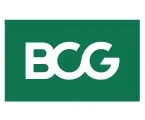
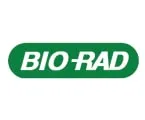


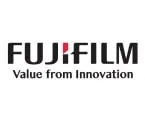

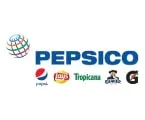
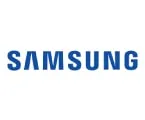


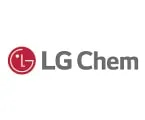



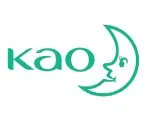
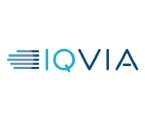
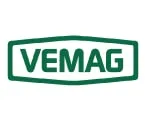
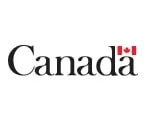

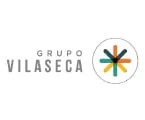
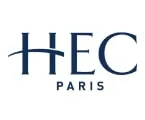

Published Date: Apr-2025
Published Date: Apr-2025
Published Date: Mar-2025
Published Date: Mar-2025
Published Date: Mar-2025
Please enter your corporate email id here to view sample report.
Subscribe to get the latest industry updates